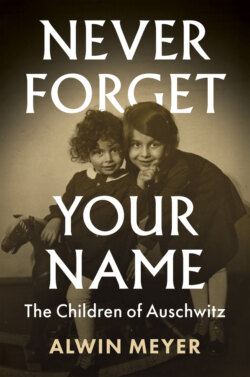Читать книгу Never Forget Your Name - Alwin Meyer - Страница 16
Notes
Оглавление1 1 Lipscher, Die Juden, pp. 90−3.
2 2 For the developments in Topol’čany and Slovakia, see also Büchler, Topoltschany, pp. 93–173.
3 3 Ibid., pp. 159, 161−6.
4 4 Albert S. Kotowski, ‘“Ukrainisches Piemont?” – Die Karpatenukraine am Vorabend des Zweiten Weltkrieges’, in Jahrbücher für Geschichte Osteuropas, 49 (2001), p. 94; Gerlach and Aly, Das letzte Kapitel, pp. 482–3.
5 5 Gerlach and Aly, Das letzte Kapitel, p. 74.
6 6 Ibid., pp. 74−5.
7 7 Czech, Auschwitz Chronicle, p. 148.
8 8 Lipscher, Die Juden, p. 119.
9 9 Schmidt-Hartmann, ‘Tschechoslowakei’, p. 373.
10 10 Lipscher, Die Juden, p. 119.
11 11 Gerlach and Aly, Das letzte Kapitel, pp. 482–3; Gutman, Holocaust, vol. IV, pp. 1365–6.
12 12 Gutman, Holocaust, vol. II, pp. 610–12; vol. IV, p. 1325; Fleischer, ‘Griechenland’, pp. 245–6.
13 13 Gutman, Holocaust, vol. II, pp. 612–16.
14 14 Nar, ‘Die Juden von Thessaloniki’, pp. 83–4.
15 15 Benbassa and Rodrigue, Die Geschichte der sephardischen Juden, p. 235; Gutman, Holocaust, vol. IV, p. 1325.
16 16 Fleischer, ‘Griechenland’, pp. 250–1; Bossong, Die Sepharden, p. 110.
17 17 Stella Salem, ‘The Old Jewish Cemetery of Thessaloniki’, in Cultural Forum, pp. 58–9. Other publications also described the situation: see, for example, Benbassa and Rodrigue, Die Geschichte der sephardischen Juden, p. 236: ‘[War administration councillor Max Merten] demanded a ransom from the Jews of Saloniki of 3,500 million drachmae, subsequently reduced to 2,500 million. The Jewish community also agreed to hand over the centuries-old Jewish cemetery to the municipal authorities, which they had wished to take possession of in all the years between the wars. The cemetery was rapidly demolished.’ Gutman, Holocaust, vol. IV, p. 1326: ‘[The Jewish community] ransomed its young men… Part of the money was raised in Salonika and Athens; the rest came from the transfer of the five-hundred-year-old graveyard to the municipality, which systematically destroyed it.’ Bossong, Die Sepharden, p. 110: ‘In December 1942 the Nazi thugs razed the Jewish cemetery in the heart of the city … to the ground.’ Fleischer, ‘Griechenland’, pp. 250–1: ‘[Several weeks of] negotiations between the military authorities … and the Jewish community [ended] with an agreement …, by which the last of their hard-pressed brothers were bought free. After drawn-out negotiations … the ransom in billions … was agreed … In addition, the historical Jewish cemetery … was transferred to the Greek municipal authorities.’ Rene Mohlo and Vilma Hastaoglou-Martinidis, Jüdische Orte in Thessaloniki (Athens and Braunschweig 2011), pp. 23–4: ‘[Merten] offered [the release of the Jewish forced labourers] from the labour camps against payment of 3.5 billion drachmae. The community did its best to raise the demanded sum but was unable to do so in its entirety. Using this as a pretext, Merten on 6 December 1942 followed the advice of the collaborating governor of Macedonia, Vasilis Simonidis, and ordered the municipal authorities to destroy the old Jewish cemetery.’
18 18 Eberhard Randholz, ‘Das griechische Jerusalem – Tagung über die Geschichte der Juden von Thessaloniki’, Deutschlandfunk, 19 October 2004.
19 19 ‘Jewish Cemetery’, in Cultural Forum, pp. 50, 55–8. Other publications state that the Jewish cemetery in Thessaloniki had ‘300,000 graves’ (Bossong, Die Sepharden, p. 110), ‘over 300,000 graves’ (Molho and Hastaoglou-Martinidis, Jüdische Orte in Thessaloniki, p. 24), or ‘500,000 graves’ razed to the ground (radio broadcast by Simone Böcker and Chrissi Wilkens, ‘Stadt der vielen Erinnerungen’, Deutschlandfunk, 25 September 2010).
20 20 Sandner, Frankfurt – Auschwitz, pp. 129−35, 146–56, 269–74.
